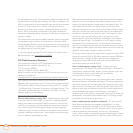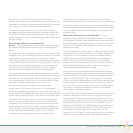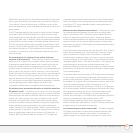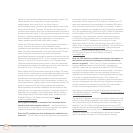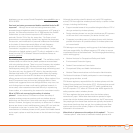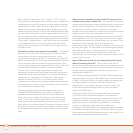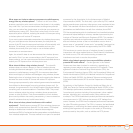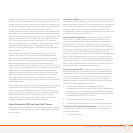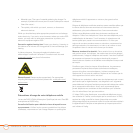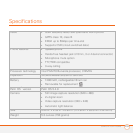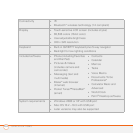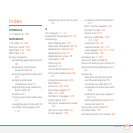
REGULATORY INFORMATION
256
The FDA's microwave oven standard is an emission standard (as
opposed to an exposure standard) that allows specific levels of
microwave leakage (measured at five centimeters from the oven
surface). The standard also requires ovens to have two independent
interlock systems that prevent the oven from generating microwaves
the moment that the latch is released or the door of the oven is
opened. The FDA has stated that ovens that meet its standards and are
used according to the manufacturer's recommendations are safe for
consumer and industrial use. More information is available from:
www.fda.gov/cdrh
.
The EPA has, in the past, considered developing federal guidelines for
public exposure to RF radiation. However, EPA activities related to RF
safety and health are presently limited to advisory functions. For
example, the EPA now chairs an Inter-agency Radiofrequency
Working Group, which coordinates RF health-related activities among
the various federal agencies with health or regulatory responsibilities
in this area.
OSHA is responsible for protecting workers from exposure to
hazardous chemical and physical agents. In 1971, OSHA issued a
protection guide for exposure of workers to RF radiation [29 CFR
1910.97]. However, this guide was later ruled to be only advisory and
not mandatory. Moreover, it was based on an earlier RF exposure
standard that has now been revised. At the present time, OSHA uses
the IEEE and/or FCC exposure guidelines for enforcement purposes
under OSHA's “general duty clause” (for more information see:
http://www.osha-slc.gov/SLTC/radiofrequencyradiation/index.html
.
NIOSH is part of the U.S. Department of Health and Human Services.
It conducts research and investigations into issues related to
occupational exposure to chemical and physical agents. NIOSH has,
in the past, undertaken to develop RF exposure guidelines for
workers, but final guidelines were never adopted by the agency.
NIOSH conducts safety-related RF studies through its Physical
Agents Effects Branch in Cincinnati, Ohio.
The NTIA is an agency of the U.S. Department of Commerce and is
responsible for authorizing Federal Government use of the RF
electromagnetic spectrum. Like the FCC, the NTIA also has NEPA
responsibilities and has considered adopting guidelines for evaluating
RF exposure from U.S. Government transmitters such as radar and
military facilities.
The Department of Defense (DOD) has conducted research on the
biological effects of RF energy for a number of years. This research is
now conducted primarily at the U.S. Air Force Research Laboratory
located at Brooks Air Force Base, Texas. The DOD Web site for RF
biological effects information is listed with other sites in conjunction
with a question on other sources of information, below.
Who funds and carries out research on the biological effects of
RF energy? Research into possible biological effects of RF energy
is carried out in laboratories in the United States and around the
world. In the U.S., most research has been funded by the
Department of Defense, due to the extensive military use of RF
equipment such as radar and high-powered radio transmitters. In
addition, some federal agencies responsible for health and safety,
such as the Environmental Protection Agency (EPA) and the U.S.
Food and Drug Administration (FDA), have sponsored and conducted
research in this area. At the present time, most of the non-military
research on biological effects of RF energy in the U.S. is being funded
by industry organizations. More research is being carried out
overseas, particularly in Europe.
In 1996, the World Health Organization (WHO) established the
International EMF Project to review the scientific literature and work
towards resolution of health concerns over the use of RF technology.
WHO maintains a Web site that provides extensive information on
this project and about RF biological effects and research
(www.who.ch/peh-emf
).
FDA, EPA and other US government agencies responsible for public
health and safety have worked together and in connection with WHO
to monitor developments and identify research needs related to RF
biological effects.
How does FCC audit cell phone RF? After FCC grants permission
for a particular cellular telephone to be marketed, FCC will
occasionally conduct “post-grant” testing to determine whether
production versions of the phone are being produced to conform with
FCC regulatory requirements. The manufacturer of a cell phone that
does not meet FCC's regulatory requirements may be required to
remove the cell phone from use and to refund the purchase price or
provide a replacement phone, and may be subject to civil or criminal
penalties. In addition, if the cell phone presents a risk of injury to the
user, FDA may also take regulatory action. The most important
post-grant test, from a consumer's perspective, is testing of the RF



